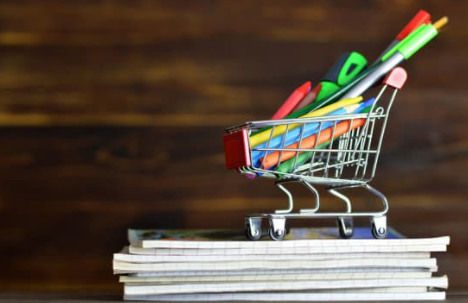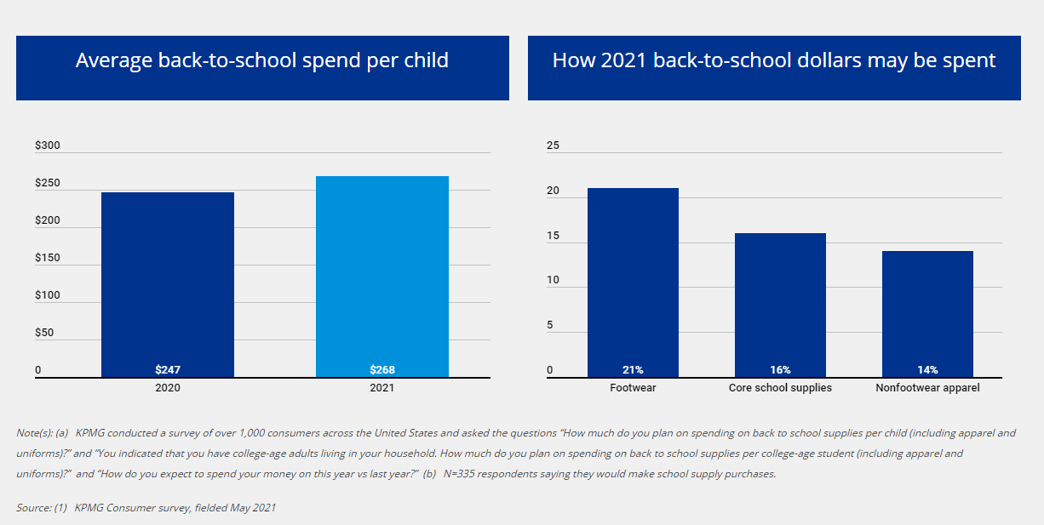As the summer comes to a close, schools are preparing to welcome back hundreds of thousands of kids in person. Cue the sounds of children crying and parents rejoicing. And children returning to school brings the regularly scheduled, annual back-to-school shopping trips. But this begs the question — will people be doing this shopping in-person or online?

Change is inevitable and the retail space has been evolving for quite some time — especially with the rise of e-commerce. But brick and mortar retail isn't dead.
While e-commerce may be booming and seemingly pushing physical retail out, willingness to adapt to new consumer demands and behaviors, especially amid exogenous shocks such as the rise of the internet or the pandemic, is key to survival.
The Best of Both Worlds, The Omnichannel
For the retail sector, embracing all channels means the coexistence of virtual and physical. From grocery stores to department stores, retailers that were traditionally solely physical have adopted virtual methodologies such as online shopping or curbside pick-up. Those that had started out as solely virtual have started to incorporate physical locations, both permanent and pop-ups, into their business plan.
Virtual and physical retail have different strengths and challenges.
Virtual retail embodies convenience. Being able to find everything you need/want in the comfort of your own home made this option really popular. Social media even allows people to find items that they didn't even know they wanted from stores they didn't know existed — ever heard of a "For You Page"?
Now add a pandemic into the mix. Being able to obtain products at home became a necessity. Demand didn't change because of COVID but behaviors had to; people could still shop, just not in person.
However, restrictions have eased since the height of lockdown and there is now a strong demand for human interaction and the experience of physical retail as a whole.
Happy New (School) Year
As discussed in the National Retail Recovery Conference, COVID has further proved the resiliency of physical retail; the ability to interact with other people is a major appeal, especially post lockdown. In order to regain a sense of normalcy, many back-to-school shoppers have opted to get their supplies in person.
With hundreds of thousands of kids on track to return to school, retailers had to prepare — especially physical retailers.
In the past, many shoppers would wait for seasonal sales to buy their necessary supplies. This year, sales are expected to be infrequent and the goods not as discounted.
We are seeing instances where demand is outpacing supply of goods, especially in apparel.
-Keith Jelinek
Because demand is outpacing supply, Jelinek, the managing director of retail at Berkeley Research Group, is encouraging shoppers to plan their shopping sooner rather than later. But the demand distribution for supplies is not only allocated to in-person shopping. Online sales are expected to be 30% greater than pre-COVID.
While virtual retail doesn't provide shoppers with the full experience (the ability to try on items before purchasing, being assisted by floor attendants, etc.), it doesn't have the same limitations in inventory.
In-person learning requires different goods (from pencils and notebooks to apparel) and overall, consumers are planning to spend more this year on supplies than in previous years.

Physical Retail is Imperative
On the supply side, physical retail is necessary for some retailers due to space; rather than storing their products in a warehouse, the store itself is used as a "warehouse" for their products. On the demand side, the desire for an "experience" makes physical retail imperative, even amid the age of the internet.
Maybe it was pent-up demand for goods (a residual effect of lockdown) or maybe the shift in behavior was truly due to a demand for in-person retail but once lockdown restrictions eased, people flocked to stores — not just for back-to-school shopping but also for gyms and restaurants.
People craved human interaction and the full "experience" of physical retail so much that demand has risen to almost pre-pandemic levels. The trade-off of convenience for experience is worth it to some consumers.
So which do you prefer — in-person shopping, online shopping, or both?
Stay in the loop and read more industry insights!